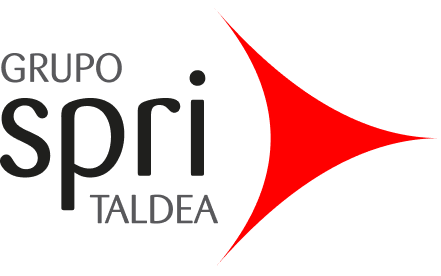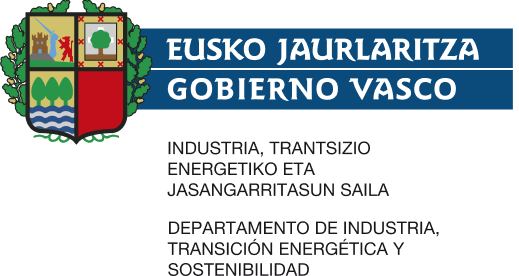Ferulic_15
Next-generation cellular antioxidant technology
Next-generation active ingredient with antioxidant and photoprotective properties, designed to promote firmer, protected, and radiant skin.
The ferulic acid used by Optidel Biosystems is extracted and purified from rice bran and germ of Oryza sativa Linne (Gramineae).
Ferulic Acid (C10H10O4) is a phenolic acid derived from cinnamic acid. It is a plant-based cosmetic ingredient with powerful antioxidant properties. It plays a key role in protecting the skin from oxidative stress helping to slow down premature skin aging.
- check_circleMaximum concentration and efficacy: Optidel keeps the active ingredient stable and bioavailable for superior results.
- check_circleTotal versatility: The easiest and most effective way to add ferulic acid to a wide range of cosmetic formulations.
- check_circleProtection and beauty in one step: Antioxidant and photoprotective power for firmer, protected, and luminous skin.
- check_circleYour secret to achieving the “glass skin” effect: Flawless, radiant, and vibrant-looking skin.
How does it work?
Photoprotective Action
Shields the skin from sun damage and effectively repairs it, restoring vitality and preventing photoaging.
Advanced Antioxidant Power
Delivers potent antioxidant activity, outperforming vitamin C and strengthening cellular defenses against aging and oxidative damage.
Soothing and Anti-inflammatory Effect
Soothes sensitive skin, reduces irritation, and provides immediate comfort thanks to its powerful anti-inflammatory action.
Anti-aging Prevention
Protects and regenerates the dermal matrix, restoring elasticity, structure, and vitality to the skin.
Cellular Protection and Anti-senescence
Ferulic_15 neutralizes inflammation, preserves skin youthfulness, and ensures a less inflamed, more resilient skin protected at the cellular core.
Oxidative Stress:
Cellular Imbalance with Visible Impact
Oxidation is a natural process that damages skin tissues and accelerates aging. External factors such as UV radiation or pollution intensify this damage, making signs of aging more visible.
When reactive oxygen species (ROS) exceed the skin’s natural antioxidant defenses, they progressively damage DNA, epidermal lipids, and structural proteins—undermining both cellular health and functionality.
Oxidative stress compromises the integrity of skin cells, accelerating tissue deterioration and promoting the appearance of visible signs of skin aging.
Cellular consequences
keyboard_arrow_downDegradation of collagen and elastin fibers
DNA damage
Slowing of cellular metabolism
Weakening of the skin barrier function
Visible consequences
keyboard_arrow_downLoss of hydration
Wrinkles and loss of firmness
Dark spots
Dull skin
In-vitro efficacy
Intracellular Antioxidant Effect: ROS Activity Test
110% reduction in ROS
+35% more effective than Vitamin C
Ferulic_15 prevents the formation of reactive oxygen species (ROS), outperforming Vitamin C's antioxidant power by 35%.
Even under basal conditions, it showed an additional +10% improvement, confirming its high potency as a cellular antioxidant shield.
See graph
keyboard_arrow_downROS production (percentage) in HaCaT keratinocyte cell lines obtained from the antioxidant assay after 4 hours of exposure to tBPH with the tested ingredient at the indicated concentrations. The positive control, insult by tBPH, represents the cells exposed only to the oxidizing agent tBPH. The bars represent the mean of six technical replicates from one independent assay. Error bars represent the standard deviation. Statistical significance *p < 0.005.
Photoprotective Efficacy
Restores and multiplies your skin’s
photoprotection x4 after sun damage
FERULIC_15 restores and multiplies skin photoprotection by x4 after UV exposure.
Maximum defense, maximum repair, maximum boost: your skin becomes 60% more protected.
Immediate booster effect: even at low concentrations, FERULIC_15 boosts sun protection to its maximum levels.
See graph
keyboard_arrow_downIn vitro assay conducted on human keratinocytes (HaCaT) to evaluate the skin’s repair capacity after sun damage. Cells were irradiated with simulated solar light and treated with different concentrations of the compound for 24 h. Cell viability was measured using the MTT assay.
Anti-inflammatory Activity
Concentration 0.1%
IL-8 reduction by 89%
Concentration 0.05%
IL-8 reduction by 62%
Demonstrated anti-inflammatory action:
- 89% reduction in IL-8 at 0.1% concentration → approaching basal levels
- 62% reduction in IL-8 at 0.05% concentration
Ferulic_15 effectively and dose-dependently reduces IL-8 production—a key marker in inflammatory processes—supporting its use as a soothing and anti-inflammatory active in advanced cosmetic formulations.
See graph
keyboard_arrow_downIn vitro assay performed on differentiated human monocytic cells (THP-1), stimulated with LPS to induce inflammation. The compound was applied at different concentrations for 24 hours, and its effect was assessed by measuring IL-8 levels using ELISA. The reduction of this pro-inflammatory cytokine confirmed its anti-inflammatory activity.
Ex-vivo results
Skin Structural Protection
Concentration 1%
86% Recovery
Concentration 0,05%
99% Recovery
Ferulic_15 protects the extracellular matrix and helps preserve skin firmness, elasticity, and youthfulness.
Collagen
Ferulic_15 shows strong protective action:
- At 1%: recovery up to 86%
- At 3%: nearly complete restoration at 99%
Elastin
Ferulic_15 prevents degradation by improving basal levels at both concentrations (1% and 3%)
See graph
keyboard_arrow_downThe ex vivo study evaluated Ferulic15’s ability to modulate the extracellular matrix in explants of photoaged human skin (Fitzpatrick skin type III, 47 years old), subjected to simulated solar irradiation and corticosteroid treatment. Levels of soluble collagen and elastin were quantified using specific colorimetric assays, allowing assessment of the treatment’s ability to preserve or restore these structural components when facing damage induced by photoaging.
Anti-inflammatory Activity Assessment
Concentration 3%
Reduces inflammation by up to 50%
against solar aging
Ferulic_15 demonstrates proven efficacy in reducing key inflammatory markers associated with sun damage, ensuring less inflamed, younger-looking, and more resilient skin.
- Up to 4x less inflammation: Ferulic_15 significantly reduces IL-8 and IL-6 levels, matching those of healthy skin within 10 days.
- Immediate protection: After 72h, Ferulic_15 at 3% lowers inflammation by 56% compared to sun-damaged skin.
- Long-lasting effect: After 10 days, skin treated with Ferulic_15 maintains controlled levels of inflammatory markers.
See graph
keyboard_arrow_downTo analyze the inflammatory response associated with skin aging and the effect of Ferulic15 treatment, concentrations of the pro-inflammatory cytokines IL-6 and IL-8 were measured in the culture supernatant using ELISA assays. These markers reflect the chronic inflammatory phenotype of photoaged skin and help assess the anti-inflammatory potential of the compound in the ex vivo model. The reduction of these pro-inflammatory mediators confirms the efficacy of Ferulic15 in mitigating persistent inflammatory processes associated with skin deterioration.
Application
O/W creams and lotions · Sunscreen products · Post-treatment or post-sun exposure formulas · Soothing treatments for sensitive or irritated skin · Products for acne-prone or rosacea-prone skin · Anti-aging products
Recommended dosage: 1% – 3%
Formulation Tips
Add in bulk during the final phase of the production process, ensuring the temperature does not exceed 40 °C.
Add to the blend and maintain low agitation until fully homogeneous.
Active Concentration (w/w)
Ferulic acid at 15%
INCI name:
INCI: Propylene glycol, dimethyl isosorbide, ferulic acid
CAS: 57-55-6, 5306-85-4, 537-98-4 / 1135-24-6 / 657-55-6, 13956-29-1
Documentation
If you want to learn all the details about Optidel Ferulic_15, you can download the full documentation here. You’ll find information on its properties, usage, and the best recommendations to maximize its potential.





